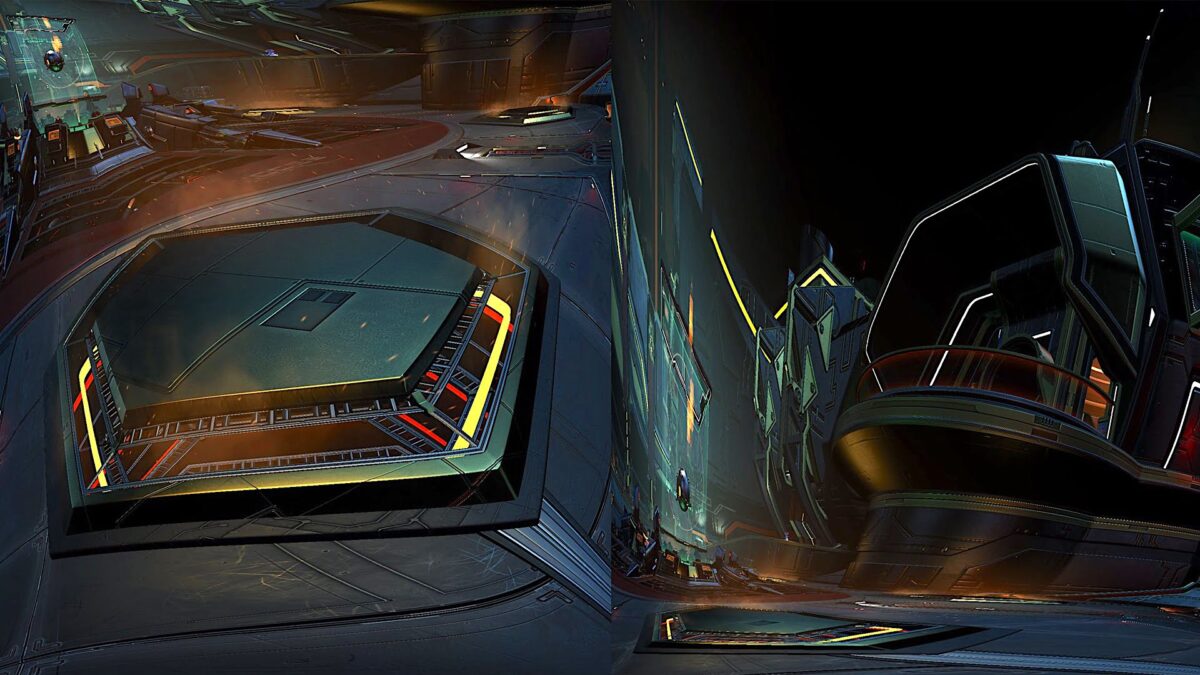Foveated rendering on Playstation VR 2 is a technical marvel

Foveated rendering does phenomenal things for PSVR 2. Here's what a GPU-rendered foveated image actually looks like.
The PSVR 2 version of No Man's Sky received support for foveated rendering in the last major update, and the visual difference is huge, as I recently experienced when I tried it out for myself. If No Man's Sky VR looked rough and blurry before, the planets, creatures, spaceships, and buildings now look as clear and majestic as they should. The game has gone from ugly duckling to a PSVR 2 standout title.
With foveated rendering, internal cameras track where the user's eyes are looking. This "foveal" focus area of the sharpest vision is then selectively rendered at a higher resolution, while the periphery is rendered at lower details. This saves a lot of rendering power and explains why No Man's Sky looks so much better now. Users usually don't notice the visual tricks behind the foveated rendering.
Engine programmer shows GPU render images
Implementing foveated rendering is not easy, which is why some PSVR 2 games don't use it at all. Engine programmer Martin Griffiths wrote on Twitter that he spent four months integrating foveated rendering into No Man's Sky's custom graphics engine. In a Twitter thread, he illustrates how the GPU renders the game world when using foveated rendering.
It’s quite common to illustrate foveated rendering in the way we did for the recent No Man’s Sky Echoes release - but the actual image the GPU renders in this mode is quite different and somewhat less intuitive.. possibly even unexpected unless you’re a graphics engineer. (1/n). https://t.co/ju0mZF4O1g
AdAd— Martin Griffiths (@Griff_) August 26, 2023
If you look at the TV output of the game, you can see the reduced resolution in peripheral vision. The TV output represents what the right eye sees, converted into a flat image. Griffiths now shows what the images rendered by the GPU actually look like: highly distorted, depending on which area of the game world you focus on, for example, the floor or a balcony, with their details standing out (see this article's image). For better viewing, you can check out the various images here.
"I hope seeing these real source headset images illustrates why foveated rendering gives such a huge leap in fidelity - the GPU is rendering detail exactly where it’s needed, at the centre of your focus," said Griffiths.
Foveated rendering is the future
Playstation VR 2 is the first consumer VR headset on the market to support foveated rendering. This enables detailed or expansive game worlds in high-resolution and smooth frame rates. In addition to No Man's Sky, Resident Evil 7, Horizon Call of the Mountain, Gran Turismo 7, and several indie titles take advantage of this rendering technology.
For a long time, it was not clear if and when this complex technology would be mature enough to appear in commercially available products. After several years of research, Meta finally introduced it in 2022 and only for Quest Pro, with good but not outstanding results. The reason is that Quest Pro uses a mobile chip and eye tracking requires computing resources. At least for standalone headsets, foveated rendering is not yet a game changer.
Note: Links to online stores in articles can be so-called affiliate links. If you buy through this link, MIXED receives a commission from the provider. For you the price does not change.